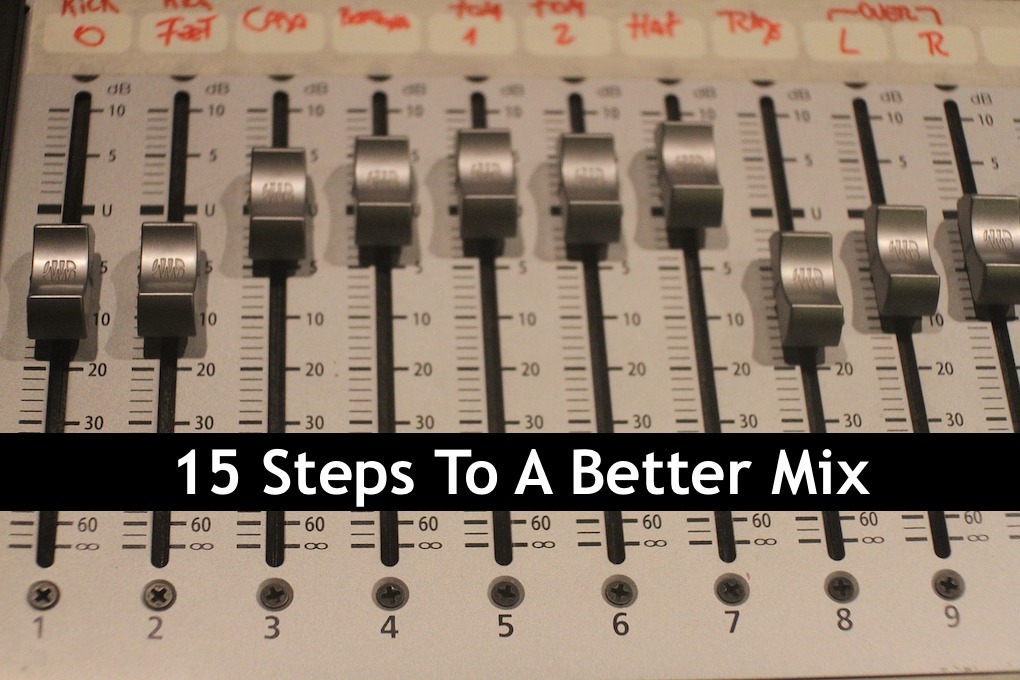- in Production by Bobby Owsinski
15 Steps To A Better Mix

Mixing is a nebulous art in that most musicians and engineers learn more by feel and listening than by being taught. As a result, a number of important items in a mix can be easily overlooked, and these can mean the difference between a mix that sounds polished and professional and one that sounds amateurish.
Here’s a checklist of items from the 4th edition of my Mixing Engineer’s Handbook that can help you think in a little more detail about your mix and tighten it up as a result.
1. Does your mix have dynamic contrast? Does it build as the song goes along? Are different instruments, sounds, or lines added or muted in different sections?
2. Does your mix have a focal point? Is the mix centered around the instrument or vocal that’s the most important?
3. Does your mix sound noisy? Have you eliminated any count-offs, guitar amp noises, bad edits, and breaths that stand out? Each one may not seem like much, but their effect is cumulative.
4. Does your mix lack clarity or punch? Can you distinguish every instrument? Does the rhythm section sound great by itself? Is the balance between bass, kick, and snare correct?
5. Does your mix sound distant? Try decreasing the level of the reverb and effects, starting with the wettest and then working your way to the least wet.
6. Can your hear every lyric? Every word must be heard. Tweak the automation if you’re using it; automate the track if you’re not.
7. Can you hear every note being played? If solos or signature lines are being masked, automate the track to hear every note, or tweak the automation until you can.
8. Are the sounds dull or uninteresting? Are generic synth patches or predictable guitar or keyboard sounds being used? Try modifying them with an effect.
9. Does the song groove? Does it feel as good as your favorite song? Is the instrument or instruments that supplies the groove loud enough?
10. What’s the direction of the song? Should it be close and intimate or big and loud? If your current direction isn’t working, try the opposite.
11. Are you compressing too much? Does the mix feel squashed? Is it fatiguing to listen to? Is all the life gone? Decrease the mix buss compression first. Decrease the main instrument or vocal compression next. Decrease the rhythm-section compression next. Decrease the compression on everything else lastly.
12. Are you EQing too much? Is it too bright or too big? Decrease the upper midrange EQ on the vocals, guitars, loops, and snare. Decrease the low-frequency EQ on the bass and kick.
13. Are your fades too tight? Does the beginning or ending of the song sound clipped? Adjust the fades until the attack transients of the notes are distinct.
14. Did you do alternate mixes? Did you do at least an instrumental-only mix?
15. Did you document the keeper mixes? Are all files properly named? Are you sure which file is the master? Have you made a backup?
An interesting mix is all in the details, and those take time to sort out. Working through each one of these steps may take a while, but the end result can definitely be worth it.
You can read more from The Mixing Engineer’s Handbook and my other books on the excerpt section of bobbyowsinski.com.

